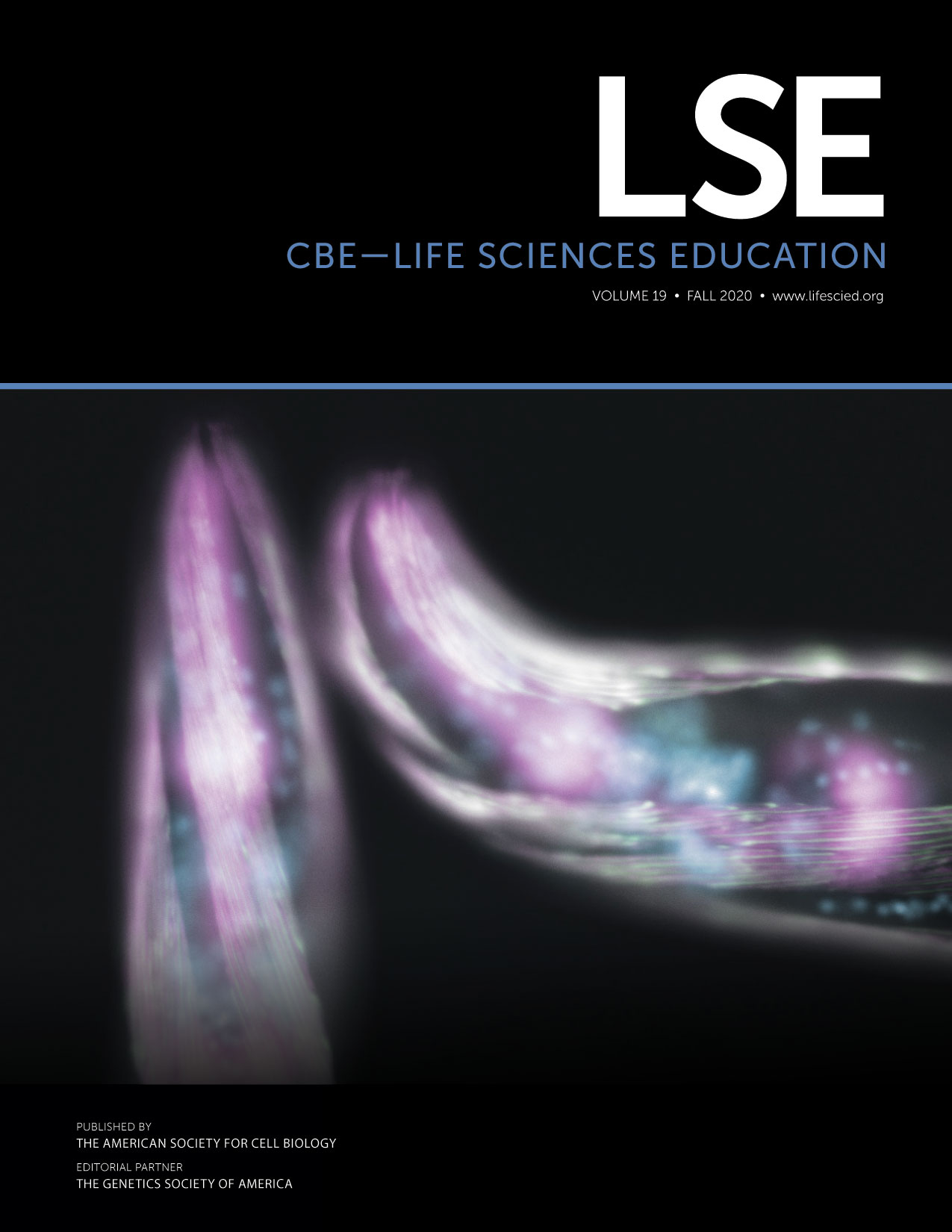Applying Graph Theory to Examine the Dynamics of Student Discussions in Small-Group Learning
The authors of “Applying Graph Theory to Examine the Dynamics of Student Discussions in Small-Group Learning” (CBE Life Sci. Educ. [2019] 18, ar29; doi: 10.1187/cbe.18-11-0222) wish to make a correction to the text.
Original Text
Degree centralization for a given graph ranges from 0 to 1 and is calculated as
Centralization = No. nodes × Maximum degree of any node – ∑ degree centralities
We use degree centralization to determine to what extent a discussion is dominated by its most active participant.
Correction
Degree centralization (CD) for a given graph ranges from 0 to 1 and is calculated as


where Cmax is the maximum observed degree centrality of any node in the graph, Ci the degree centrality of an individual node, i the index for each node, and n the total number of nodes; the denominator is the theoretical maximum of the numerator for a graph with n nodes and is calculated as 2(n − 1)(n − 2) for directed graphs and (n − 1)(n − 2) for unredirected graphs (Freeman, 1978). We use degree centralization to determine to what extent a discussion is dominated by its most active participant.
The correction to the equation does not change the calculated results as reported nor the authors’ conclusions. The authors apologize for the error.
The HTML and PDF versions were corrected on the CBE—Life Sciences Education website on September 1, 2020. These corrections may not appear on copies of the article that reside on other websites.



